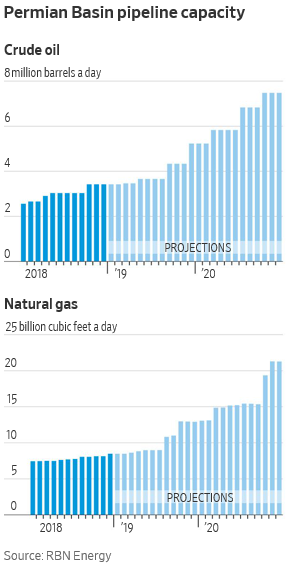Want to lower consumer energy costs? Invest in energy infrastructure.
Jessica Lutz
Posted January 15, 2019
The U.S. natural gas and oil pipeline network spans 2.7 million miles. And while that may sound like a lot, a recent Wall Street Journal article reminds us that U.S. energy infrastructure is still failing to keep up with production and demand. Americans in some parts of the country remain under-served while companies in high-production areas are forced to offload excess natural gas resources – all because of a lack of adequate infrastructure, and regulatory barriers to new development.
Innovations and advancements from natural gas and oil companies, most notably hydraulic fracturing or “fracking”, have unlocked vast energy resources previously thought inaccessible. Clean natural gas is now used to generate about one-third of U.S. electricity, and that number is expected to grow. But while the increased use of natural gas in electricity generation has driven U.S. CO2 emissions to their lowest level in a generation, the lack of sufficient infrastructure limits even greater environmental benefits.
Unfortunately, the consequences of insufficient infrastructure extend beyond environmental impacts. In high-production areas like the Permian, the lack of pipelines creates bottlenecks, and the gas glut has sent prices into a free fall. Meanwhile, places like New England can’t get enough natural gas to keep people warm and safe during winter months, causing shortages and creating unnecessary stress on the power grid because of a severe lack of sufficient infrastructure in the region, and sending spot prices through the roof. A recent editorial in the Boston Business Journal from Don Santa, President and CEO of the Interstate Natural Gas Association of America, highlights the problem:
“On average, people [in New England] face some of the highest energy rates in the country, paying 29 percent more for natural gas and 44 percent more for electricity than the national average. But the problem isn’t a lack of natural gas supply; it’s a lack of infrastructure that reduces people’s access to affordable and clean energy supplies from nearby sources.”
Not far from one of the largest natural gas supplies in the world, the Marcellus Shale, which spans upstate New York, through Pennsylvania, West Virginia, and into Ohio, natural gas in the New England region should be incredibly affordable. But insufficient natural gas infrastructure, beyond forcing prices up and restricting supply, has a few other consequences that consumers may not realize. Santa:
“Last year power plants were forced to use fuel oil, relying on an energy source that is far less efficient than natural gas. When that wasn’t sufficient, they had to import liquefied natural gas from Russia. Let that sink in: a lack of pipelines means Ohio and Pennsylvania are effectively further from New England than Siberia.”
New and expanded pipeline capacity is needed to ensure that Americans in all regions may benefit from the nation’s abundance of natural gas and oil, and it’s needed soon. The U.S. Energy Information Administration estimates December natural gas production in the U.S. was up about 22% from a year earlier, and in the Permian that number reached 34%.
Without the proper infrastructure, as stated simply in the WSJ article:
“You’ll see things get worse and worse and worse as oil production grows and gas production grows alongside it.”
About The Author
Jessica Lutz is a writer for the American Petroleum Institute. Jessica joined API after 10+ years leading the in-house marketing and communications for non-profits and trade associations. A Michigan native, Jessica graduated from The University of Michigan with degrees in Communications and Political Science. She resides in London, and spends most of her free time trying to keep up with her energetic Giant Schnauzer, Jackson.



